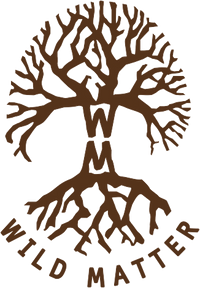Posted on September 10 2018
There are many ways to use tobacco, but there is one particular tobacco tradition that is especially important to those who seek the wisdom of the Amazon. Rapé is a special tobacco blend that is made from a dried and powdered tobacco snuff. It is considered a strong and wonderful healing medicine in many ancient traditions. It is pronounced “ra-pé” in Spanish or more commonly “ha-pé” in Portuguese. It can be found throughout South America but is most popular in Brazil. Amongst the indigenous peoples of the Amazon region, it can be called by many different names. But no matter how it’s pronounced or what word is used to describe it, rapé is always respected as one of the most important medicines available.
Unlike many other snuffs and powders that are taken through the nose, rapé is not usually taken by snorting it. Instead, a blowpipe is used to blow the rapé into the nose. This makes the use of rapé a uniquely social practice, because, while you can use a special blowpipe for serving yourself called a kuripe, it is usually done with a partner who blows the rapé into your nose with a large blowpipe called a tepi. While the ingredients can vary, it always starts with a base of tobacco and tree ash. To that mixture may be added seeds, leaves, and plants to take advantage of their specific properties or add to the taste or smell. The main ingredient in rapé ingredient is the special jungle tobacco mapacho. Mapacho is a special type of tobacco (Nicotiana Rustica) that is often 8-20 times stronger than the type found in most cigarettes. It is traditionally prayed over while it is curing, and is processed with no additives. To this tobacco is added the ash from sacred trees. This ash acts as an alkalizer to balance the tobacco. Sometimes seeds like yopo or wilka may be added to help bring on visions, or flowers might be added to give it a more feminine and nurturing energy. The snuff is made during a lengthy and intensive ritual process to invoke the maker’s medicine and the spirits of the plants used.
Unlike many other snuffs and powders that are taken through the nose, rapé is not usually taken by snorting it. Instead, a blowpipe is used to blow the rapé into the nose. This makes the use of rapé a uniquely social practice, because, while you can use a special blowpipe for serving yourself called a kuripe, it is usually done with a partner who blows the rapé into your nose with a large blowpipe called a tepi. While the ingredients can vary, it always starts with a base of tobacco and tree ash. To that mixture may be added seeds, leaves, and plants to take advantage of their specific properties or add to the taste or smell. The main ingredient in rapé ingredient is the special jungle tobacco mapacho. Mapacho is a special type of tobacco (Nicotiana Rustica) that is often 8-20 times stronger than the type found in most cigarettes. It is traditionally prayed over while it is curing, and is processed with no additives. To this tobacco is added the ash from sacred trees. This ash acts as an alkalizer to balance the tobacco. Sometimes seeds like yopo or wilka may be added to help bring on visions, or flowers might be added to give it a more feminine and nurturing energy. The snuff is made during a lengthy and intensive ritual process to invoke the maker’s medicine and the spirits of the plants used.

0 comments